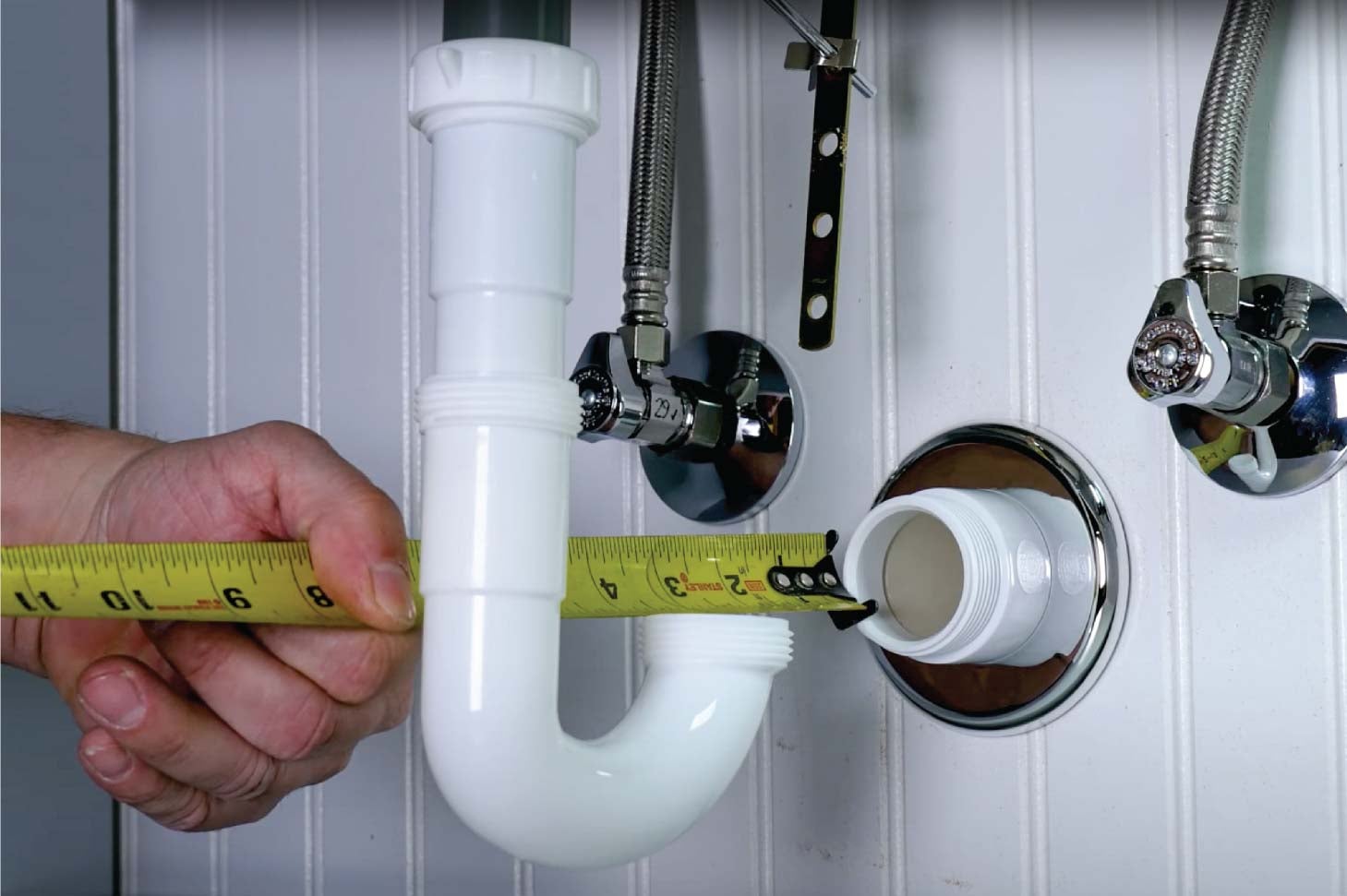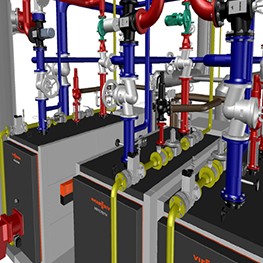Just how do you actually feel with regards to Understanding Your Home's Plumbing Anatomy?

Understanding how your home's plumbing system works is essential for every homeowner. From providing clean water for drinking, cooking, and showering to securely eliminating wastewater, a well-kept pipes system is vital for your household's health and wellness and comfort. In this detailed guide, we'll explore the elaborate network that makes up your home's pipes and deal ideas on maintenance, upgrades, and dealing with typical issues.
Intro
Your home's pipes system is more than just a network of pipelines; it's a complicated system that guarantees you have access to clean water and reliable wastewater removal. Knowing its parts and just how they interact can assist you protect against expensive repairs and make sure everything runs efficiently.
Standard Components of a Pipes System
Pipes and Tubes
At the heart of your plumbing system are the pipelines and tubing that carry water throughout your home. These can be made of different materials such as copper, PVC, or PEX, each with its advantages in regards to resilience and cost-effectiveness.
Fixtures: Sinks, Toilets, Showers, and so on.
Fixtures like sinks, bathrooms, showers, and bathtubs are where water is utilized in your house. Understanding how these components attach to the plumbing system assists in diagnosing issues and intending upgrades.
Valves and Shut-off Factors
Valves regulate the flow of water in your pipes system. Shut-off valves are essential throughout emergency situations or when you need to make repair work, permitting you to isolate parts of the system without interrupting water flow to the entire residence.
Supply Of Water System
Main Water Line
The main water line links your home to the municipal water supply or a personal well. It's where water enters your home and is distributed to various components.
Water Meter and Pressure Regulatory Authority
The water meter procedures your water usage, while a pressure regulatory authority ensures that water streams at a safe pressure throughout your home's pipes system, avoiding damages to pipelines and fixtures.
Cold Water vs. Warm water Lines
Recognizing the distinction in between cold water lines, which supply water directly from the major, and warm water lines, which carry heated water from the hot water heater, assists in repairing and planning for upgrades.
Drain System
Drain Pipes Piping and Traps
Drain pipes bring wastewater away from sinks, showers, and bathrooms to the sewage system or septic tank. Traps stop sewage system gases from entering your home and also catch debris that can trigger obstructions.
Ventilation Pipes
Air flow pipes enable air into the water drainage system, stopping suction that could slow down drain and trigger catches to empty. Appropriate air flow is essential for keeping the honesty of your pipes system.
Importance of Proper Drain
Making certain correct water drainage prevents backups and water damages. Frequently cleansing drains pipes and keeping catches can avoid expensive repair work and prolong the life of your plumbing system.
Water Heating Unit
Types of Water Heaters
Water heaters can be tankless or conventional tank-style. Tankless heaters heat water on demand, while containers save warmed water for immediate usage.
Exactly How Water Heaters Connect to the Plumbing System
Understanding just how hot water heater attach to both the cold water supply and warm water distribution lines aids in identifying issues like not enough warm water or leaks.
Upkeep Tips for Water Heaters
On a regular basis flushing your hot water heater to eliminate sediment, examining the temperature setups, and checking for leaks can expand its life-span and boost energy efficiency.
Usual Pipes Issues
Leakages and Their Causes
Leakages can occur due to aging pipes, loosened fittings, or high water stress. Dealing with leakages promptly stops water damage and mold and mildew growth.
Clogs and Clogs
Clogs in drains and commodes are typically caused by purging non-flushable things or an accumulation of oil and hair. Utilizing drain displays and being mindful of what decreases your drains pipes can avoid obstructions.
Indicators of Plumbing Issues to Expect
Low water stress, slow drains, foul odors, or abnormally high water expenses are indicators of prospective pipes problems that need to be dealt with promptly.
Pipes Upkeep Tips
Routine Examinations and Checks
Schedule yearly pipes evaluations to capture concerns early. Look for signs of leaks, deterioration, or mineral buildup in taps and showerheads.
DIY Maintenance Tasks
Basic jobs like cleaning faucet aerators, checking for toilet leaks utilizing color tablet computers, or shielding exposed pipes in chilly climates can protect against major plumbing concerns.
When to Call a Specialist Plumbing Technician
Know when a pipes issue calls for expert proficiency. Attempting intricate repair work without correct knowledge can bring about more damage and higher repair service prices.
Updating Your Pipes System
Factors for Upgrading
Upgrading to water-efficient fixtures or replacing old pipelines can boost water quality, decrease water expenses, and boost the worth of your home.
Modern Pipes Technologies and Their Advantages
Explore innovations like wise leakage detectors, water-saving commodes, and energy-efficient hot water heater that can save money and reduce environmental impact.
Cost Considerations and ROI
Calculate the upfront costs versus long-lasting cost savings when taking into consideration pipes upgrades. Lots of upgrades spend for themselves with minimized energy costs and less fixings.
Ecological Influence and Preservation
Water-Saving Components and Home Appliances
Mounting low-flow taps, showerheads, and bathrooms can substantially minimize water usage without sacrificing performance.
Tips for Decreasing Water Usage
Simple habits like fixing leakages immediately, taking much shorter showers, and running full lots of washing and meals can conserve water and lower your utility bills.
Eco-Friendly Pipes Options
Think about sustainable pipes products like bamboo for flooring, which is durable and green, or recycled glass for kitchen counters.
Emergency Readiness
Actions to Take During a Plumbing Emergency
Know where your shut-off shutoffs are located and just how to switch off the water in case of a ruptured pipe or major leak.
Significance of Having Emergency Situation Get In Touches With Convenient
Maintain call details for neighborhood plumbing technicians or emergency situation services readily available for fast action throughout a plumbing crisis.
Do It Yourself Emergency Situation Fixes (When Appropriate).
Short-lived solutions like utilizing air duct tape to spot a leaking pipe or putting a bucket under a leaking faucet can lessen damage up until an expert plumbing professional gets here.
Final thought.
Comprehending the makeup of your home's plumbing system encourages you to preserve it effectively, conserving time and money on fixings. By adhering to regular upkeep routines and staying notified about modern-day pipes innovations, you can guarantee your plumbing system runs efficiently for many years to come.
HOW YOUR PLUMBING SYSTEM WORKS
Which Pipes Do What?
Blue lines = fresh water supply entering the building
Red lines = hot water supply entering the building
Grey lines = pipes carrying waste away from the building and venting pipes carrying gases away from the building (through the roof)
YOUR MAIN PLUMBING SYSTEMS
There are two main plumbing systems that support your home s basic plumbing needs one that brings clean water into your home, and one that sends dirty water away from your home. Connected to the toilet, bath, shower, and other faucets in your home, these two systems keep your water flowing in the right directions.
ACCESSING FRESH WATER
Fresh and clean water is brought into your home through the main water supply line . Filtered through one pipe, this water is pressured to flow into the various fixtures in your home at any given time.
This water can be sourced from a well located on your property, a pond or river (mostly cottages), or, as in most cases, from the city s municipal water treatment centre. However, it is important to note that water that is untreated, such as the water siphoned from ponds or rivers, may not be safe to drink. Personal water supplies always need to be treated for hardness and contaminants before consumed.
MUNICIPAL WATER SUPPLIES
Improve taste and odour
Remove sediment
Eliminate hardness
Reduce chlorine
COLD WATER SUPPLY VS. HOT WATER SUPPLY
Cold water flows into your home or building through the service line, which then distributes hot or cold water to your fixtures. This line is most commonly run through a central column that runs floor to floor. Hot water runs in short and straight pipes as the longer the pipeline, the more heat that will be lost in the transfer. Having shorter pipes also allows residents to access hot water more quickly.
WASTE WATER SYSTEM
Your wastewater system is divided into two parts pipes that send wastewater away from your home and venting pipes that send sewer gas away from your home. Sewage water travels through pipes that flush the water and waste towards local sewers that are operated and managed by your city or town. Most sewer systems rely on gravity to move the wastewater to where it needs to go.
The further away from your toilet or sink, the larger wastewater pipes become. This allows for waste to be disposed of from various parts of your home or business at once without pipe blockages. The angle and flow of these pipes are also essential for keeping your waste pipes clear of build up.
https://harrisplumbing.ca/how-your-home-plumbing-system-works/

HOW YOUR PLUMBING SYSTEM WORKS
Which Pipes Do What?
YOUR MAIN PLUMBING SYSTEMS
There are two main plumbing systems that support your home s basic plumbing needs one that brings clean water into your home, and one that sends dirty water away from your home. Connected to the toilet, bath, shower, and other faucets in your home, these two systems keep your water flowing in the right directions.
ACCESSING FRESH WATER
Fresh and clean water is brought into your home through the main water supply line . Filtered through one pipe, this water is pressured to flow into the various fixtures in your home at any given time.
This water can be sourced from a well located on your property, a pond or river (mostly cottages), or, as in most cases, from the city s municipal water treatment centre. However, it is important to note that water that is untreated, such as the water siphoned from ponds or rivers, may not be safe to drink. Personal water supplies always need to be treated for hardness and contaminants before consumed.
MUNICIPAL WATER SUPPLIES
COLD WATER SUPPLY VS. HOT WATER SUPPLY
Cold water flows into your home or building through the service line, which then distributes hot or cold water to your fixtures. This line is most commonly run through a central column that runs floor to floor. Hot water runs in short and straight pipes as the longer the pipeline, the more heat that will be lost in the transfer. Having shorter pipes also allows residents to access hot water more quickly.
WASTE WATER SYSTEM
Your wastewater system is divided into two parts pipes that send wastewater away from your home and venting pipes that send sewer gas away from your home. Sewage water travels through pipes that flush the water and waste towards local sewers that are operated and managed by your city or town. Most sewer systems rely on gravity to move the wastewater to where it needs to go.
The further away from your toilet or sink, the larger wastewater pipes become. This allows for waste to be disposed of from various parts of your home or business at once without pipe blockages. The angle and flow of these pipes are also essential for keeping your waste pipes clear of build up.
https://harrisplumbing.ca/how-your-home-plumbing-system-works/
As a keen reader about Understanding Your Home's Plumbing Anatomy, I thought sharing that excerpt was really useful. In case you liked our blog entry please remember to share it. I take joy in your readership.
Call Today